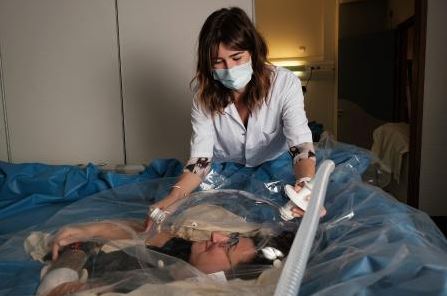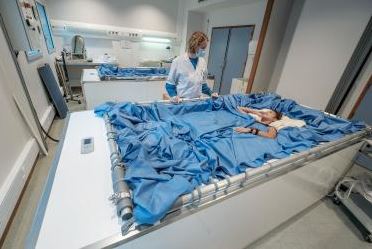Female dry immersion study – 2021
Date :
2021
State of progress :
Ended
Objective :
Study of the effects of space flight on the human body
Partner :
ESA
MEDES conducted a new study for ESA to simulate weightlessness, using the “Dry Immersion” model on an all-women group !
In the last quarter of 2021, a new clinical study took place in which 20 female volunteers, aged between 20 and 40, spent five days “immersed” as part of a dry immersion clinical study, a model for simulating weightlessness, aimed at recreating some of the effects of space flight on the human body. The campaign started with the first two subjects in our Space Clinic on 21 September 2021.
Volunteers were placed in bathtub-like tanks covered with an impermeable fabric to keep them dry and with water pressure applied evenly over the entire body surface. As a result, the human body interprets it as a “complete lack of support” – a situation similar to that experienced by astronauts on the International Space Station.
This was only the second time that a dry immersion campaign had taken place on exclusively female subjects, and it was a first in Europe. ESA decided to conduct the study, called VIVALDI, to fill the gap in scientific data on women.
“In this field of research, there is almost no knowledge about the physiological and psychological effects of space flight on women. A dry immersion study involving only women will complement the previous studies involving men, conducted in Europe and Russia,” explained Angélique Van Ombergen, head of life sciences at ESA.
The volunteers experienced restricted movement in a constrained environment and changes in body fluids and mobility, as well as in the perception of their own bodies.


A day of “immersion”
Immersion begins when water covers the immobilised subject above the chest, with the rest of the body covered by a waterproof cotton sheet. Only the arms and head are not covered by the sheet.
The volunteers spend almost 24 hours a day in the immersion tank, where their movements are restricted as much as possible. Each day starts at 7am with the taking of biological samples and includes numerous scientific protocols and measurements to study the body’s adaptation to this new environment.
All activities, from recreation to washing, are carried out in the immersion tank. Only a small pillow is allowed during meals to make them easier. Subjects are allowed out of the tank for showering or specific tests or examinations, where they remain supine with their heads tilted downwards at 6 degrees to minimise internal-fluid movement.
Why dry immersion ?
In weightlessness, astronauts’ bodies lose muscle and bone density, eyesight can deteriorate and there is a redistribution of fluids in the body, particularly to the brain. Much of the research on human space exploration consists in finding ways for astronauts to stay healthy in orbit.
The results of this type of research not only benefit astronauts in studying the adverse effects of space flight on the body, but also patients on Earth with similar disorders and the elderly.
The results of the study were programmed for 2022.


Nos actualités
Nos projets
Une question ?
Devenir volontaire ?
Nos études cliniques
Urgent ! Recrutement volontaires
